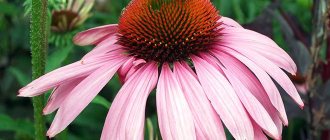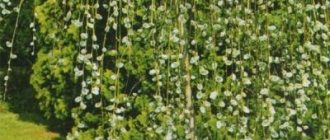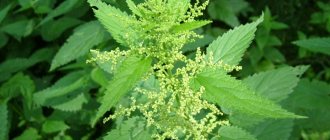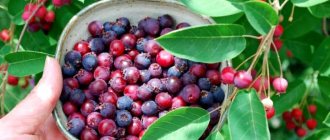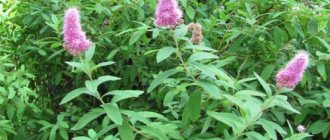Hawthorn (Crataegus) is a genus of about 1,250 species that grows in temperate and subtropical climates and belongs to the Rosaceae family. About 40 species of hawthorn can be found in the CIS.
Hawthorn is widely used by humans. It is planted along roads as a dust collector, in parks, squares, near houses, as an ornamental plant. Species have been bred that bloom continuously. Hawthorn is recognized by both folk and official medicine. Hawthorn berries are widely used in cooking.
Types of hawthorn
The following species are widespread in the CIS:
- blood red hawthorn (Siberian),
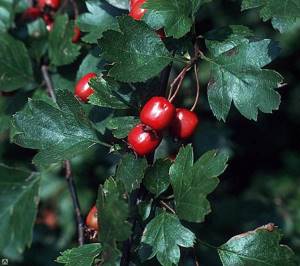
- prickly hawthorn (common hawthorn) – Crataegus oxyacantha L.,

- hawthorn monopistillate (single-stone),
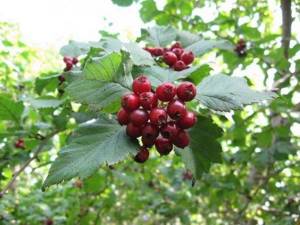
- hawthorn pentagyna – Crataegus pentagyna,
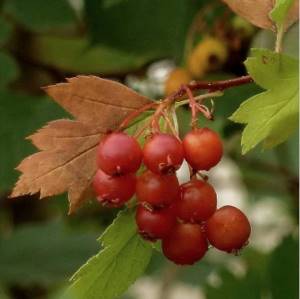
- Daurian hawthorn,
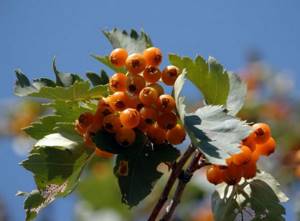
- Altai hawthorn,
- Ukrainian hawthorn,
- Caucasian hawthorn,
- crooked hawthorn,
- hawthorn reflexum sepal, etc.
Although the medicinal and beneficial properties of hawthorn of these species are similar, nevertheless, traditional medicine gives preference mainly to prickly hawthorn.
In official medicine, blood-red hawthorn has been used for medicinal purposes.
Latin name: Crataegus sanguinea Pall.
Other names: boyarka, glod (glod), glozhina, log, lady.
back to contents
Easy care
Growing this wonderful plant is not a hassle. Hawthorn is shade-tolerant, drought- and frost-resistant, tolerates pruning and crown formation well, and is completely undemanding to soil composition. In other words, having planted it once in your garden and paying attention to the young seedling in the first year, you don’t have to worry about its future fate. And yet, experienced gardeners advise adding fertilizers to the soil in early spring and autumn so that flowering and fruiting are as complete as possible.
see also
- Common hawthorn
Botanical description of hawthorn
Hawthorn is a large shrub or small tree up to 5 m high (sometimes 10-12 m). Young branches are purple-brown, shiny, covered with sparse, thick, straight spines up to 4 cm long.
The leaves are alternate, obovate or broadly rhombic with a wedge-shaped base, pointed, shallowly three to seven-lobed serrate, short pubescent on both sides, 2-6 cm long, located on short petioles. The color is dark green in summer and orange-red in autumn.
Flowers with five petals, white or slightly pink, are united in dense corymbose inflorescences with a diameter of 4-5 cm. They have a weak specific smell.
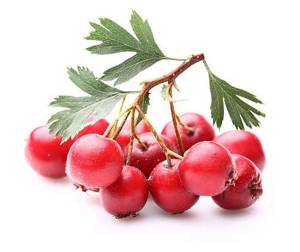
The fruits are spherical or slightly oblong berries with a remaining calyx, diameter 8-10 mm, with 3-4 seeds containing 1 seed. The pulp is mealy. The color, depending on the species, is blood red, brownish, orange, pink, yellow or black. The taste is sweet and sour.
Flowering time is May-June. It blooms profusely, but very quickly, sometimes 2-3 days, which makes collecting flowers very difficult. The fruits ripen in September-October.
Hawthorn begins to bear fruit at the age of 10-15, life expectancy is up to 400 years. Propagated by seeds, root suckers, cuttings.
back to contents
Spiny or ordinary

One of the most famous species of hawthorn, it grows almost throughout Europe. Often found in city gardens and parks.
This is a large shrub up to 4 m high or a tree up to 5 m, with a dense oval crown and thorny branches - hence its name. The flowers are white or pink, collected in corymbs. The fruits are oblong, about 1 cm in diameter, bright red on the outside, yellow on the inside. Ripen in August - September. It begins to bear fruit in the 7th year.
This hawthorn grows slowly. Any soil is suitable - it even lives on rocks! It grows well in the shade and is not afraid of drought and frost. It tolerates cutting and shaping very well.
In the garden it can be used as a hedge - no one will get through the thorny thickets. In May - June, it will delight both the owners of the site and the surrounding beekeepers with abundant flowering - the prickly hawthorn is an excellent honey plant.
And housewives have so many opportunities! Fruits collected after frost (then they become sweet) can be eaten fresh or candied, and then used as a filling for pies, jelly and compotes. Hawthorn makes excellent jam. You can also dry the fruits, grind them into flour and add it to the dough for baking homemade bread - it will turn out to be rich in vitamins and with a fruity flavor.
Well, there’s no need to talk about the medicinal properties of this shrub - heart patients and hypertensive patients know about them firsthand.
Habitat
The genus of hawthorns is ubiquitous. The plant can often be found in parks and squares. Blood-red hawthorn is found in the European part of the CIS, Western and Eastern Siberia, to the Pacific Ocean, in the south - in Kazakhstan.
The plant is light-loving and frost-resistant, grows in the steppe zone, along slopes and ravines, in sparse forests, on the edges and clearings. It prefers rich, well-moistened soils, so it can be found along the banks of rivers and other bodies of water.
back to contents
Description
Siberian hawthorn has a Latin name - crataegus sanguinea and belongs to the rose family. The height of the bush can reach 5 meters. The shoots are strong, red-brown in color. There are spines about 4 centimeters long. The leaves are short-petioled with serrated edges, the maximum length and width are achieved on barren branches (10 * 8 centimeters). With the onset of autumn, the dark green foliage turns reddish. The flowers are collected in inflorescences, have a small size and a specific aroma. One flower consists of 5 sepals. The diameter of the corolla is about 15 millimeters. The number of stamens can be about 20 and have a purple color. The fruits are red, shaped like an apple, about 9 millimeters in diameter, contain seeds and have a sweet and sour taste. The flowering period occurs at the end of May - beginning of June. The plant is frost-resistant. Used as a decorative element in parks and squares. Propagated by seeds, root suckers and cuttings.
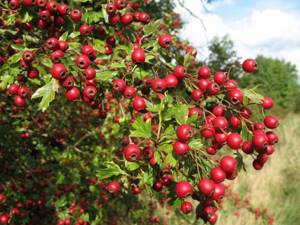
Siberian hawthorn berries are blood red in color.
Collection and preparation
Flowers, fruits, leaves and bark of hawthorn are used for medicinal purposes. Flowers are collected in dry weather at the beginning of flowering, when some of them in the inflorescences have not yet bloomed. You should not collect flowers that have not bloomed at all, as they are difficult to dry and can easily deteriorate. Drying is carried out no later than an hour or two after collection. Dried hawthorn flowers have a faint, peculiar odor and a bitter taste. The raw materials must be stored in a dry place; glass containers are best suited for this. Shelf life – 2 years.
The berries are harvested after full ripening and before frost. Drying usually lasts 7-8 days. The berries are sorted and stored in plywood boxes lined inside with thick paper, boxes, glass containers or thick canvas or paper bags. The yield of dry raw materials is 25-30% of the mass of freshly collected ones. Shelf life – up to 8 years.
Dried berries are sometimes covered with a whitish coating, which is not a sign of spoilage, but is crystallized sugar. The taste of the finished raw material is bitter or slightly sourish-sweet, the smell is weak and pleasant.
The bark is harvested from young branches in early spring during sap flow. Shelf life – 2 years.
back to contents
Agricultural technology for growing from seedlings
The easiest way to grow hawthorn in a garden plot or dacha is to plant a ready-made seedling. It is better to purchase it in a nursery or specialized store, where the likelihood of mis-grading is low.

What to pay attention to:
- availability of information about the variety, requirements for conditions;
- age - 2-3 years;
- height - 120-160 cm;
- the root system is developed, there is no damage, creases, softening, or signs of mold;
- trunk - smooth, shiny bark, no damage;
- number of skeletal branches - 3-5.
Video: features of planting hawthorn
When to plant
The seedlings are transplanted to a permanent location in spring and autumn. The timing directly depends on the climate of the area. In the fall, adaptation and rooting must take place before frosts, which means that a month is taken away from the approximate dates of their onset - during this time the plant will have time to get used to the new conditions. In spring, planting is carried out when the soil has completely thawed and positive day and night temperatures have established. It’s good if the plant has not fully woken up - adaptation will happen faster.
Related article:
Planting and caring for a columnar apple tree
Site selection and soil preparation
In their natural environment, hawthorns grow among other shrubs, in forest clearings, and in sparse forests. You will not find them under the forest canopy, which does not transmit light well. When choosing a location, you need to take into account the characteristics of the species and variety - some require a sunny area, while others require a little partial shade.
If the purpose of planting is to obtain fruits, then the place is chosen in a sunny area - for flowering and fruit formation there should be plenty of solar energy. To form a hedge and design the territory, they proceed from the needs of the variety. It is also worth considering that in a few years the tree or bush will grow and provide shade, so you need to think about what crops to place nearby.
Related article:
Privet bush

How to plant, based on planting goals:
- in order to subsequently form a beautiful hedge, seedlings are planted at intervals of 40 cm in a checkerboard pattern in trenches dug along the perimeter of the site;
- if the variety is fruit-bearing, then dig holes at intervals of 4-5 m;
- single plants (tapeworms) of large varieties are planted at a distance of 5-6 m, dwarf varieties - 1.5-2 m.
It is not recommended to plant hawthorn next to apple trees, pears, and plums - they have common diseases and pests.
The optimal soil option is heavy and fertile with a neutral or slightly alkaline reaction, without stagnant moisture, the presence of lime is acceptable. The planting site is prepared in advance - about 2-3 weeks. To do this, dig a planting hole and mix the excavated soil with humus, compost, peat (all in equal parts). If the soils are acidic, then add slaked lime (300-500 g).
Chemical composition
The fruits of blood-red hawthorn contain vitamins C, K, E. Of the macro- and microelements, the most are potassium, calcium and magnesium, as well as copper, cobalt, selenium and boron.
In addition, flavonoids (quercetin, hyperin, vitexin), organic acids (citric, oleanolic, ursolic, crategus, caffeic, chlorogenic), carotenoids, pectins, saponins, triterpene and flavone glycosides, phylosterols, choline, acetylcholine, hyperin, sorbitol were found in the berries , sugars, fatty oils, tannins.
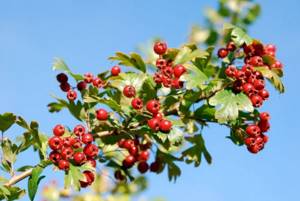
Hawthorn flowers contain flavonoids (quercetin, quercitrin), hyperoside, carotenoids, acetylcholine, choline, trimethylamine, oleanolic, caffeic, ursolic, chlorogenic acids, essential oil, tannins.
As for macro- and microelements, compared to berries, flowers contain a higher concentration of individual components. Most of them contain potassium, calcium, magnesium, as well as molybdenum, barium, selenium, and boron.
back to contents
Hawthorn is blood red. Therapeutic effects on the body
Cardiovascular diseases
Most often, the medicinal properties of hawthorn are used for the treatment and prevention of cardiovascular diseases. Plant preparations help reduce cholesterol levels in the blood and, therefore, can be used as a therapeutic and prophylactic agent for atherosclerosis. In addition, hawthorn helps reduce the permeability of blood vessels and capillaries.
Hawthorn flowers and fruits improve blood circulation in the vessels of the heart and brain, act as a vasodilator, and relieve spasms of cerebral vessels. As a result, the supply of oxygen to these organs improves.

Based on this, hawthorn is used for high blood pressure, especially at the initial stage, and it also eliminates dizziness and tinnitus.
Also, plant preparations regulate blood circulation throughout the body and are especially recommended for elderly people with circulatory insufficiency.
Hawthorn is also great for the heart. The plant tones it, normalizes the rhythm, eliminates discomfort in the heart area, shortness of breath, is used to treat functional disorders of the heart, such as cardiovascular failure, angina pectoris, angioneurosis, atrial fibrillation, paroxysmal tachycardia, extrasystole, and fights cardiac neuroses.
For cardiovascular diseases, preparations of hawthorn flowers are more effective than fruits.
Gastrointestinal diseases
The medicinal properties of hawthorn also have a positive effect on the gastrointestinal tract. Plant preparations improve digestion, eliminate flatulence and pain in the intestines, and help normalize stool during diarrhea, including in children. Also, for diarrhea, a decoction of the plant bark is used.
Hawthorn is also used to treat various gastrointestinal diseases. It is also used to treat gastritis of various forms and eliminate diarrhea due to dysentery.
Nervous system
A decoction of hawthorn fruits has proven itself well as a sedative for stress, increased excitability, and also to eliminate the effects of nervous tension.
To treat more severe disorders of the nervous system, as well as when symptoms associated with the cardiovascular system are involved, tincture of the fruit is also used.
Thyroid diseases
Hawthorn is recommended by official medicine for the treatment of increased thyroid function.
For women
Women will appreciate the beneficial and medicinal properties of hawthorn. The plant has proven itself to relieve symptoms (neuroses, suffocation, high blood pressure, etc.) and ease the course of menopause.
Breastfeeding women use hawthorn preparations if there is insufficient milk production. You can often hear the question: can hawthorn be used during pregnancy? There are no direct indications of this in the specialized literature. Therefore, you should not take risks and before you start taking plant preparations, it is better to consult with a doctor whom you trust.

Hawthorn has also proven itself well in home cosmetology. Face masks are made from mashed berries, and an infusion of flowers is used for rubbing. The plant tones the skin, gives it elasticity, normalizes moisture content, and relieves swelling. Cosmetic procedures with hawthorn are especially recommended for women over 30 as a preventive measure for skin aging, as well as during the first age-related changes.
For men
Hawthorn is also useful for men. It is used for the treatment and prevention of prostatitis and prostate adenoma, in preparations for menopause. Fresh berries, jam, decoction (tea) of berries, as well as tincture of flowers are of great benefit for normalizing sexual function and increasing potency.
In addition, hawthorn improves the functioning of the cardiovascular system, which very often suffers in men.
For the whole body
Hawthorn also benefits healthy people. Regular use of plant preparations increases immunity, normalizes metabolism in the body (infusion of flowers), helps cope with fatigue and insomnia, and improves overall well-being. Hawthorn is also taken after serious illnesses to speed up recovery.
back to contents
Dosage forms
Tincture (fresh berries)
100 gr. Grind fresh hawthorn fruits, place in a glass jar (preferably dark glass), pour 1 liter. high-quality vodka or 70% alcohol, close with a plastic lid and leave in a dark place at room temperature for 3-4 weeks, shaking occasionally. Strain and squeeze out the contents.
Take 20-30 drops 3-4 times a day before meals.
Hawthorn tincture: application. Diseases of the heart and blood vessels, nervous system, for women to eliminate the symptoms of menopause.
Tincture (flowers)
A tincture of hawthorn flowers is prepared similarly to a tincture of fresh berries. 200 gr. dry or fresh flowers pour 1 liter. high-quality vodka or 70% alcohol. Leave for 7-10 days.
Indications for use. For impotence, take 20-30 drops 3 times a day half an hour before meals.
For rheumatism, take 40-50 drops 3 times a day, half an hour to an hour after meals.
Fruit decoction
1 tbsp. pour 200 ml of hawthorn fruit. water, bring to a boil and simmer over low heat for 15 minutes. Remove from heat, cover, wrap and leave until cool. Strain, squeeze out the raw materials. Add the resulting broth with boiled water to the original volume.
Take hawthorn decoction 1/3-1/2 tbsp. 2-3 times a day half an hour before meals.
Infusion of flowers
1 tbsp. pour 200 ml of hawthorn flowers. boiling water, cover, wrap and leave until cool. Strain, squeeze out the raw materials.
Take half a glass 2-3 times a day before meals.
back to contents
Hawthorn propagation
Garden hawthorn is also grown in other ways: from cuttings, seeds, layering and shoots. With any method, the choice of location and care are similar. The seed method is practically not used at home, since it is labor-intensive and requires lengthy stratification.
Good to know: Rules for seed stratification
Cuttings
Gardeners often use the cutting method, but you need to take into account that a full-fledged seedling will be formed in 4 years. For cutting, choose one- or two-year-old lateral branches that grow in the middle tier and are not characterized by active growth. Only the lower part, 10-15 cm long and 7-8 cm wide, is suitable for cuttings. The apical part takes root much worse.
Related article:
Japanese willow Hakuro Nishiki
Cutting rules:
- cuttings are harvested before sap flow begins;
- on a green, non-lignified branch, cut under a node or bud, on a woody branch - in the center of the internode;
- the upper cut is made at the bud itself, without leaving a stump, the cut angle is 45°;
- the cuttings are kept in a root growth stimulator for an hour;
- root in a mixture of peat and sand (1:1), water, and cover with a jar on top.
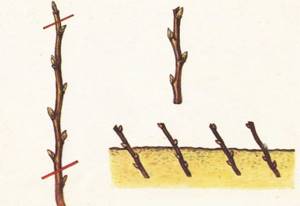
As soon as young leaves appear, the jar is removed daily for 15-20 minutes, and finally removed after a few days. They are planted in open ground the next year, maintaining an interval of at least 2 m.
Root cuttings
Root cuttings are taken in autumn and spring. To do this, the root is dug up, cleared of soil and divided into parts, the length of which is 15 cm in the fall, and 8 cm in the spring. Then they are immediately dug in in an inclined position, leaving 2 cm on the surface, watered, and mulched. Cover the top with a jar or plastic bucket.
Related article:
Bark grafting method
By layering
Using layering, a seedling is obtained from young shoots that bend and it is possible to tilt them to the ground. In the spring, the shoot, having cut off its top (7-10 cm), is placed in a groove dug under it, pinned with hooks and wire, covered with fertile soil, watered, mulched with straw and hay. The upper part of the shoot is not covered.
The burial site is regularly watered, soil is added if necessary, and it is mandatory to fertilize it with ammonium nitrate once a month. In the fall, the cuttings are cut off and replanted.
Overgrowth
The method is suitable for varieties capable of producing shoots. Young shoots located at a distance of at least 30 cm from the mother plant and reaching a height of 10-15 cm in the spring are cut off, dug into a coma of earth and immediately planted.
Related article:
Formation of trees and shrubs
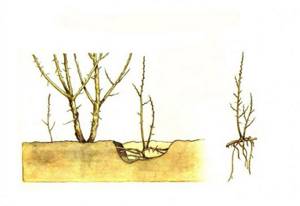
Hawthorn. Use in folk medicine

Gastritis
Pour half a glass of hawthorn fruits with boiling water so that it covers them. Cover the dish with a lid, insulate it and let it brew until warm. Eat the berries and drink the liquid.
This recipe is also recommended for intestinal pain.
Erysipelas
Grind fresh hawthorn fruits to a paste. Apply the resulting mixture to the affected areas of the skin.
Hawthorn. Contraindications and harm
Hawthorn is well tolerated, it is non-toxic, does not accumulate in the body and can be used for a long time. However, excessive doses of plant preparations (over 100 drops of tincture) can slow down the pulse, disrupt the heart rhythm, significantly lower blood pressure and cause depression of the central nervous system. For the same reason, you should not eat more than a glass of fresh hawthorn berries per day.
Contraindications to the use of hawthorn are severe disorders of the heart and kidneys. Due to the plant's ability to lower blood pressure, it should be taken with caution if you have hypotension, and it is better to consult a doctor you trust.



